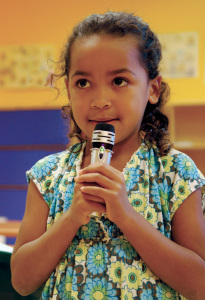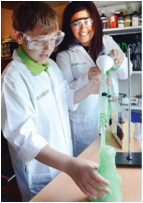 As we prepare to celebrate and reflect on the 50th anniversary of the 1963 March on Washington, I have been reading articles and seeing special reports on TV about the “I Have a Dream” speech. And, while I have heard most of it before in some form or another, things have struck me a bit differently this year. So the story goes: as Dr. King started to wrap up his remarks, he had delivered a solid speech (for him), which would undoubtedly make it the finest any of the rest of us might ever hope to deliver. But, there was a sense with him, and perhaps with others around him, that as he concluded his planned 4-minute speech, he hadn’t yet “nailed” it. And then Mahalia Jackson chimed in from his side: “Tell them about the dream, Martin.” Apparently, not once but twice, Mahalia urged: “Tell them about the dream, Martin.” Dreams are funny things. They can take us to distant places and liberate our minds and hearts. And yet, the dream untenable can trap us and leave us more hopeless and feeling more stuck in our current reality than ever. As Langston Hughes ruminated on a dream deferred: “Maybe it just sags like a heavy load. Or does it explode?” Dreams in reality can be as demoralizing as they are liberating. So, I have been reflecting on Dr. King’s dream to better understand the nature of dreams that become liberating:
It wasn’t that Dr. King had a dream; it’s that we did and he spoke it into being. He tapped into our collective experiences and timely sense of possibility and a pathway to change. He pulled the dream out of our hearts and minds and put it into our hands. Maybe for the sake of our families, schools, workplaces, and communities, we should all be better about sharing our dreams. Perhaps even more importantly, maybe we should all be like Mahalia Jackson urging others along: “Tell them about the dream.”
1 Comment
 When I paint, I think a lot about how the materials work and how I work the materials. These are two distinct parts of the painting experience as well as my experience of life. The latter is about managing and controlling the material. The former is about creating spaces and opportunities for the materials to become what they will. It’s about relinquishing control and traditional expectations in the name of exploration and learning. It’s about knowing a little, and watching a lot. Sometimes it works out. Sometimes it doesn’t. The question is how do I continue as the artist to learn about the materials so that I can create environments and opportunities for the materials to leverage their attributes and to achieve their unique possibilities. For me, as someone who has family and friends with autistic children, I can only look from the outside at the challenges and opportunities related to raising a child with autism. But, this painting process for me is a metaphor for how I see and understand the world in which I want to raise my own child, an inclusive world where risk may feel heightened, but reward can be something we have never conceived, a world we cannot manage into existence but must explore and be vigilant when its unique beauty presents itself. originally published as an artist statement  With school starting to ramp up around the country over the next few weeks, it seemed a good time to offer a long overdue shout-out to one of my former teachers, Mr. Spiegl, my 7th grade science teacher. Mr. Spiegl assigned my class a science project called the “Distillation of Wood” in which we used a Bunsen Burner and some beakers and such to break a piece of wood down into its component parts, liquids, gases, etc. Obviously, I didn’t learn much lasting about wood, or science for that matter, based on that description. But, that’s sort of the point. Knowledge of the elements of wood wasn’t going to take me very far in life. But, these lessons from the “Distillation of Wood” experiment continue to be somewhat profound:
As I continue to work in and around education and expand my world into the realm of education technology, I am ever mindful of the distinctions between information and knowledge, between content and process, between education and learning. It’s not about the tool. It’s the process the tool allows and, in the hands of a great teacher, the world of learning it can open up. |
Categories
All
Archives
April 2024
|
 RSS Feed
RSS Feed